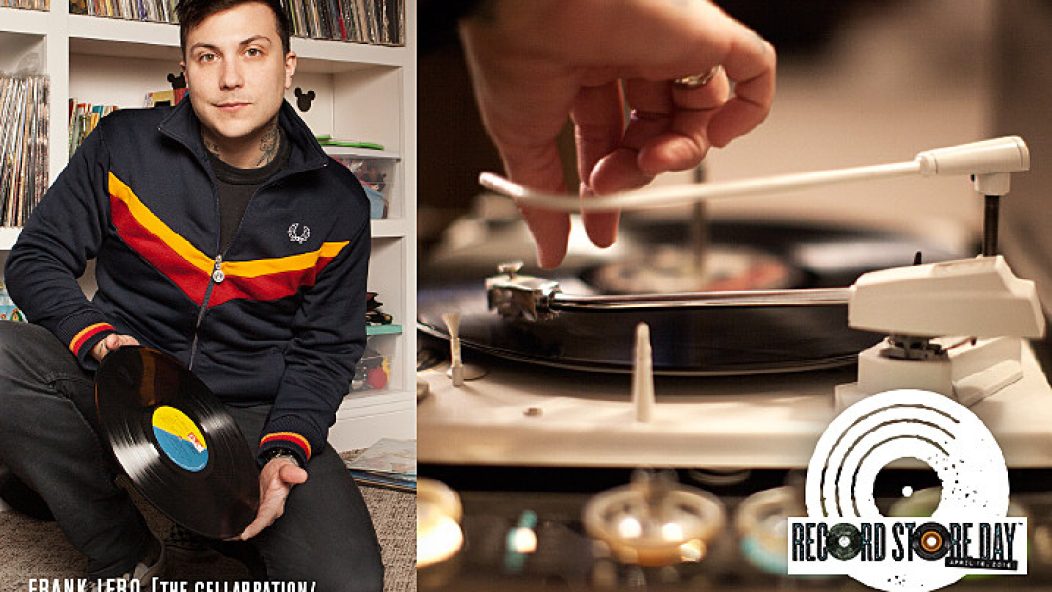
Vinyl Starter Kit: Finding the right turntable and what it'll cost you
You’ve heard from all your friends (and several of your fave artists!) that vinyl is the thing right now, but where do you even start? In honor of Record Store Day, we’ve got a three-part series that will walk you through everything from terminology (Why do I even care if it’s “hand-numbered”?) to technology (So what’s the issue with Crosley turntables?). Needles at the ready!
For part one of the series, “Which records to invest in, what to look for, where to buy,” click here.
So you want to start a record collection, eh?
Record player setups are just like cars, guitars and blenders: the more money you spend, the better quality you get. However, thanks to modern technology and the re-popularization of analog music, you can get a hookup that is affordable and legitimate.
A turntable is comprised of a plinth (base), platter (the turning table), tonearm and cartridge, which houses the needle or stylus.
They can be automatic, where pressing a button moves the tonearm on and off the disc, or manual, which means you’re responsible for placing the needle and then taking it off once the side is played out.
There are infinite combinations for record player setups, so you’ll have to do a bit of head scratchin’ and decide which is best for you and your situation. I’d also like to take the time now to reiterate: Families are the number one source to go for record collecting fodder. Even if Pops has a system that doesn’t work properly or smoothly, take it to your local record shop and get their opinion on it. Who knows! It could be an easy fix to have a vintage piece of equipment working as good as new. It’s true what they say: they don’t make ’em like they used to. But they do still make them—in more brands, models and styles than ever.
Essentially there are four basic record player setups, as illustrated by the folks at Turntable Lab.
*But first a side note on preamps: Simply, preamps change signal that your turntable is sending from a PHONO level to a LINE level (aka AUX), which is necessary to play on modern stereo systems. Some turntables have them built in, but if yours doesn't, you’ll need to buy an external phono preamp.

Common turntable and amplifier set-up: So you just got your hands on a new turntable and already have an existing stereo setup. You can easily run your new turntable through the stereo system you saved up your babysitting money to buy, you just need to make sure there’s a preamp somewhere along the lines like I mentioned in the note.
Simplified with active speakers: So you’re looking to start from scratch with the least amount of pieces involved. The quick and dirty way to play your wax is through a turntable (and preamp) connected to active speakers that power themselves—this cuts out the need for a stereo.
Turntable with computer: So either you have some great old records you want to convert to MP3s or you’re some kind of electronica DJ guy trapped in a house. In this set-up, your computer replaces the stereo receiver. If your turntable has a USB connection, it has a built in preamp. The players that have the sole function of converting vinyl to digital are not the best for everyday use, so if you’re looking for some versatility, invest in a combo turntable that can act as both. If it does not have a USB connection, you can still connect with your computer’s headphone jack for the relatively inexpensive price of a 1/8-inch adapter.
Dad helped me out: The old school set-up. This is the system that you are most likely to uncover in your basement and the one your parents will be the most familiar with. It looks like: your turntable, a stereo receiver/amplifier with a phono input and speakers.
Like a needle in a groove

The cartridge is like the shoes of the turntable: After pounding the pavement all day everyday, you’re going to eventually need a new pair. The stylus gets physically dragged along the grooves in the vinyl to pick up the embedded audio signal. A good stylus will be diamond-tipped and last for a very long time, depending on usage. But when they need to be replaced, they need to be replaced and fast. Because it relies on direct contact, scraping a worn needle along your record can do permanent damage.
There are two types of cartridges that get used by the general public: Moving magnet and moving coil. Moving magnet is the most common but do some research before you fork out the money (a good one costs upwards of $100) to make sure that you get the best one for your system. Sometimes you can get away with just replacing the stylus, but unless you’re familiar with the process it may be smart to let a professional swap out the old one for you.
The million-dollar question

When sonic quality is at stake, everything matters—from the weight of the arm to the sturdiness of the table your player is living on. More expensive turntables are made with higher quality parts (duh) to help minimize the noise and vibration of the motor that is actually turning the record. Motors can be belt drive or direct drive; belt drive has a motor that is separate from the table and rotates it using a rubber belt, whereas on a direct drive player the platter is physically connected to the motor. The former is considered to be best for quality and precision as the motor is isolated so unwanted noise is less likely, while direct drives are more sturdy, and are prominently used for DJing because you have more control over the rotation and are generally in a louder environment.
Around $100

The cheapest options out there for turntables will cost around $100. Audio-Technica is a company who are doing the budget turntables right with a great selection in all ranges. Otherwise, in this price range you’re going to be looking at manufacture cheap models that compromise quality for style. They’ll satisfy your itch but won’t last long and can even do damage to your records. If you’re seriously getting into this, do yourself a favor and take it up a notch.
Anywhere from $300-$600

This is the magic range—a beginner can get a great product on the lower end and you can please even the most pedantic audiophile on the high end of the scale. Some cool brands to lookout for are Rega, Music Hall, Pro-Ject and Pioneer. Technics by Panasonic make great turntables but they are usually beyond even this price range.
After cutting my teeth (and wax) on an Ion converter, I finally upgraded with some parental help this Christmas! Now, I run a Rega RP1 turntable through my dad’s old Technics receiver (the ‘on’ button is wedged with a piece of cardboard because if it turns off it, might not come back) with the Panasonic speakers I bought thanks to my paper route when I was 12.
There’s a lot of information to process when buying a record player so don’t be afraid to ask questions. Also be sure to think about your long term usage and it is best to try to buy from a specialty store so that they can help you out if you run into problems down the road.







